4.9 The Development of an American Culture
5 min read•june 18, 2024
Jed Quiaoit
Robby May
S
Sally Kim
AP US History 🇺🇸
454 resourcesSee Units
Significant Growth = Cultural Development!
During the period between 1800 and 1848, the United States experienced significant growth and change. The nation expanded westward through the Louisiana Purchase and the Mexican-American War, and the population grew rapidly as immigrants poured in from Europe. This expansion and growth brought about a new national culture that was a blend of American elements, European influences, and regional cultural sensibilities. 🇺🇸
One of the key American elements that contributed to this new national culture was democracy. The principles of democracy, such as self-government and individual liberty, were deeply ingrained in American culture and became increasingly important during this period.
European influences, such as the Enlightenment ideals of rationality and progress, also played a significant role in shaping the new national culture.
Regional cultural sensibilities also played an important role in the emergence of this new national culture. The different regions of the United States had their own distinct cultures, and these cultures blended together to form a new national culture. For example, the culture of the South was heavily influenced by the legacy of slavery and the plantation system, while the culture of the North was shaped by the rise of industry and urbanization.
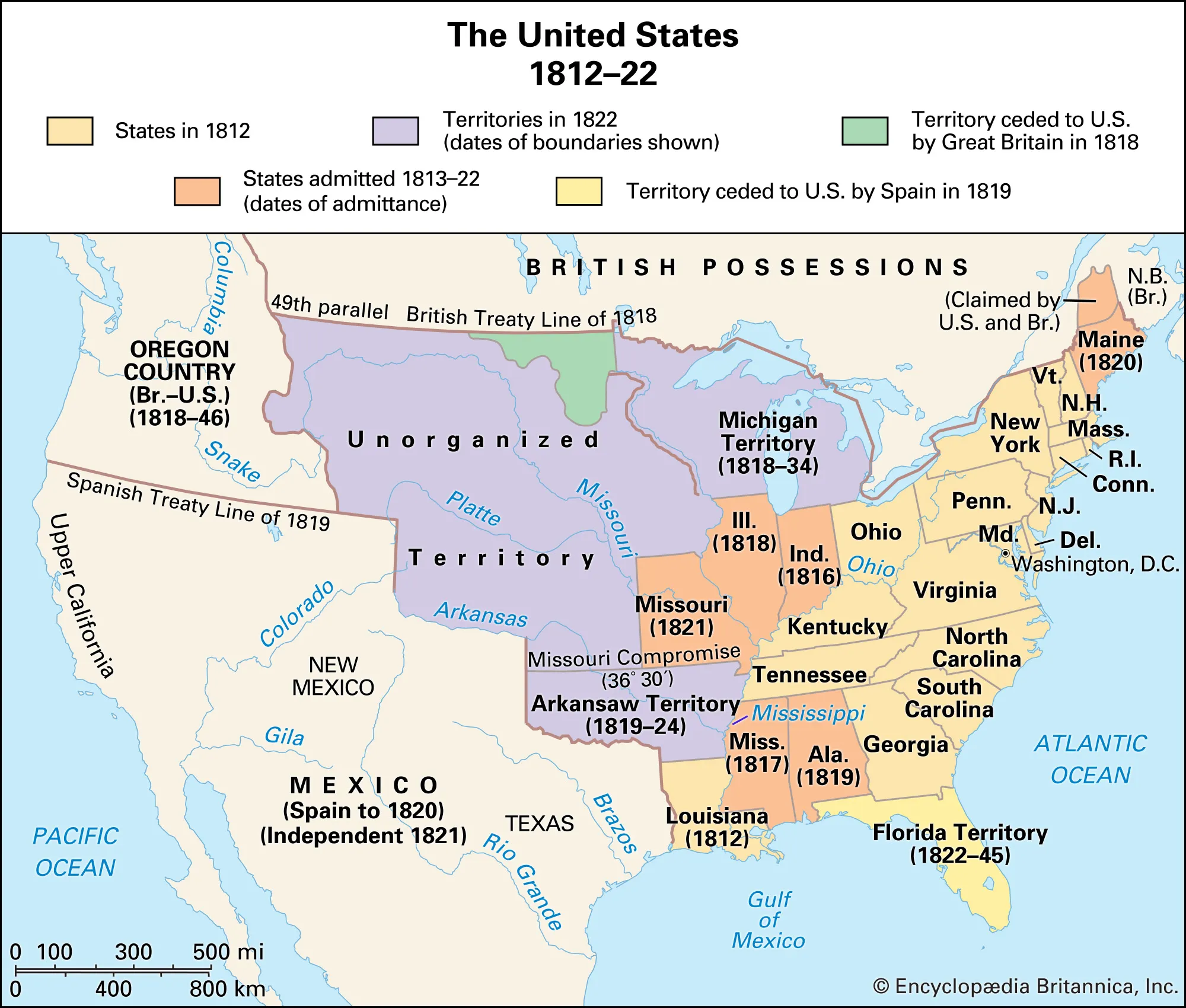
Source: Encyclopedia Britannica
This new national culture was reflected in the literature, art, and architecture of the period.
- American writers, such as James Fenimore Cooper and Washington Irving, began to create a distinct American literary tradition.
- American painters, such as Thomas Cole and Asher Durand, began to create a distinct American school of painting.
- American architects, such as Robert Mills and Thomas Ustick Walter, began to create a distinct American architectural style.
In this section, we'll go over notable cultural developments during said period of enormous growth.
Immigration
Irish immigrants were motivated to move to America primarily due to the devastating potato crop failures in Ireland that led to widespread poverty and famine. However, upon arriving in America, they faced significant discrimination due to their Roman Catholic religion and had to compete with African Americans for low-paying jobs. Many Irish immigrants were forced to take on domestic work and unskilled labor positions due to their limited skills and lack of financial resources. Despite these challenges, many Irish immigrants became involved in local politics and joined the Democratic party. 🇮🇪
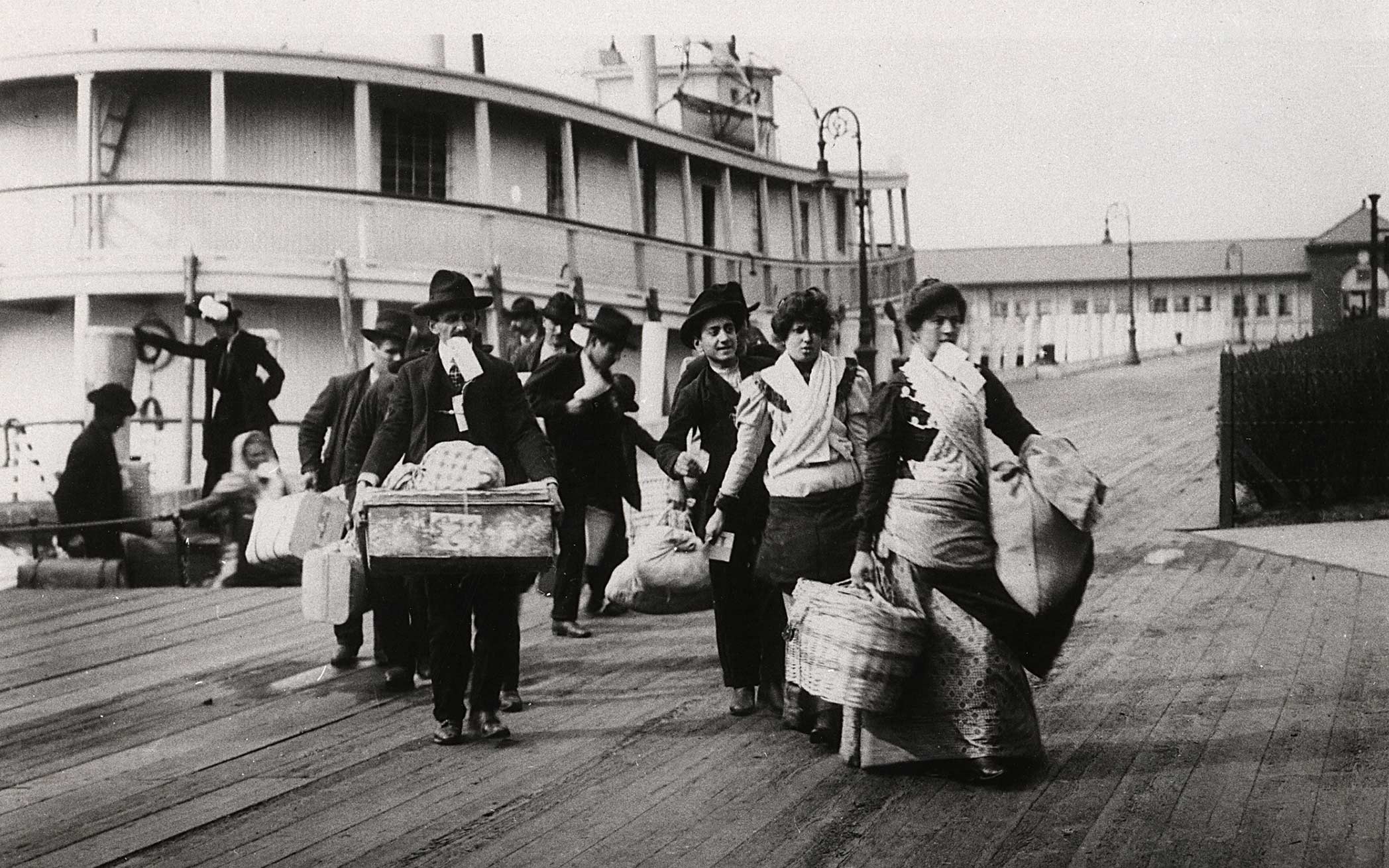
Source: IrishCentral
Germans also immigrated to America in large numbers due to economic hardships and failed democratic revolutions in their home country. These immigrants tended to have more skills and resources than the Irish, and many of them moved westward to build farms. However, they had limited political influence and often found themselves at odds with the nativist, anti-immigrant sentiment that was prevalent in the country. Despite this, many German immigrants were strong supporters of public education and opposed slavery. 🇩🇪
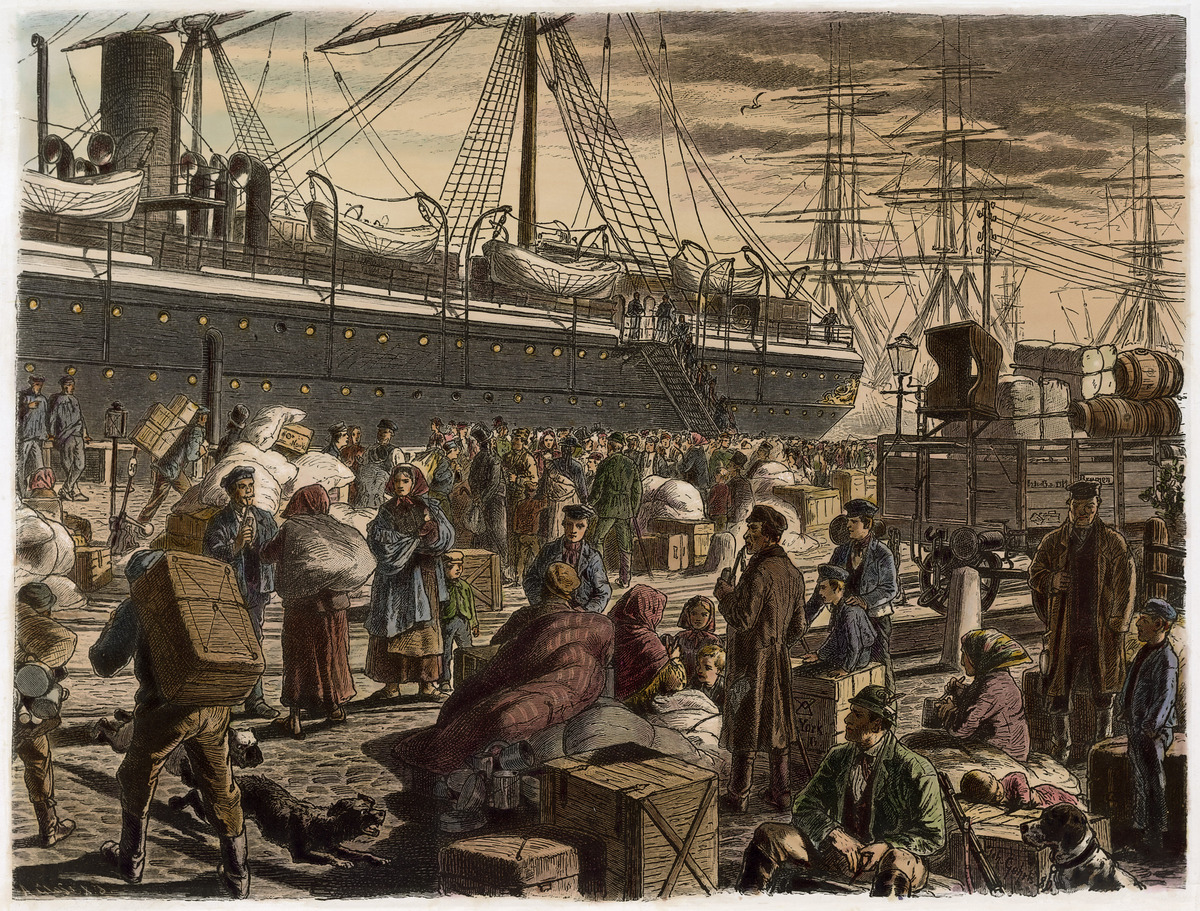
Source: German Letters
The influx of immigrants in the mid-19th century led to widespread fear and mistrust among native-born Americans. Many believed that immigrants would take their jobs and change their culture, and as a result, many people who were against immigration tended to vote for the Whig party. Nativists, who reacted most strongly to the presence of foreigners, were typically Protestants who distrusted the Roman Catholicism practiced by the Irish and many of the Germans.
The opposition to immigrants led to sporadic rioting and the formation of a secret, anti-foreign society known as the Supreme Order of the Star Spangled Banner in the 1840s.
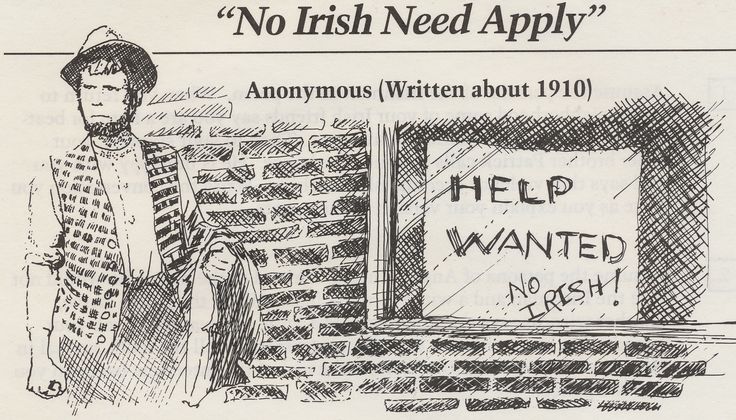
Source: Immigrant Archives
Art and Literature
Liberal ideas from Europe, such as democracy, individual rights, and equality, were brought to America by immigrants and by American travelers who visited Europe. These ideas were embraced by American writers, thinkers, and artists, who began to incorporate them into their work. American literature, for example, began to reflect the values of democracy and individual liberty, as seen in the works of James Fenimore Cooper and Washington Irving. 🗽
Romanticism was another influential movement that emerged in this period. Romanticism emphasized emotion, imagination, and the beauty of nature. This movement also believed in the perfectibility of humanity, and that individuals could reach a higher level of understanding and morality through the power of imagination and emotion. This idea was reflected in the works of American poets such as William Cullen Bryant and Henry Wadsworth Longfellow, and painters such as Thomas Cole and Asher Durand.
The Hudson River School, the first American school of art, emphasized the power and beauty of nature. It often showed the fear of westward expansion destroying nature.
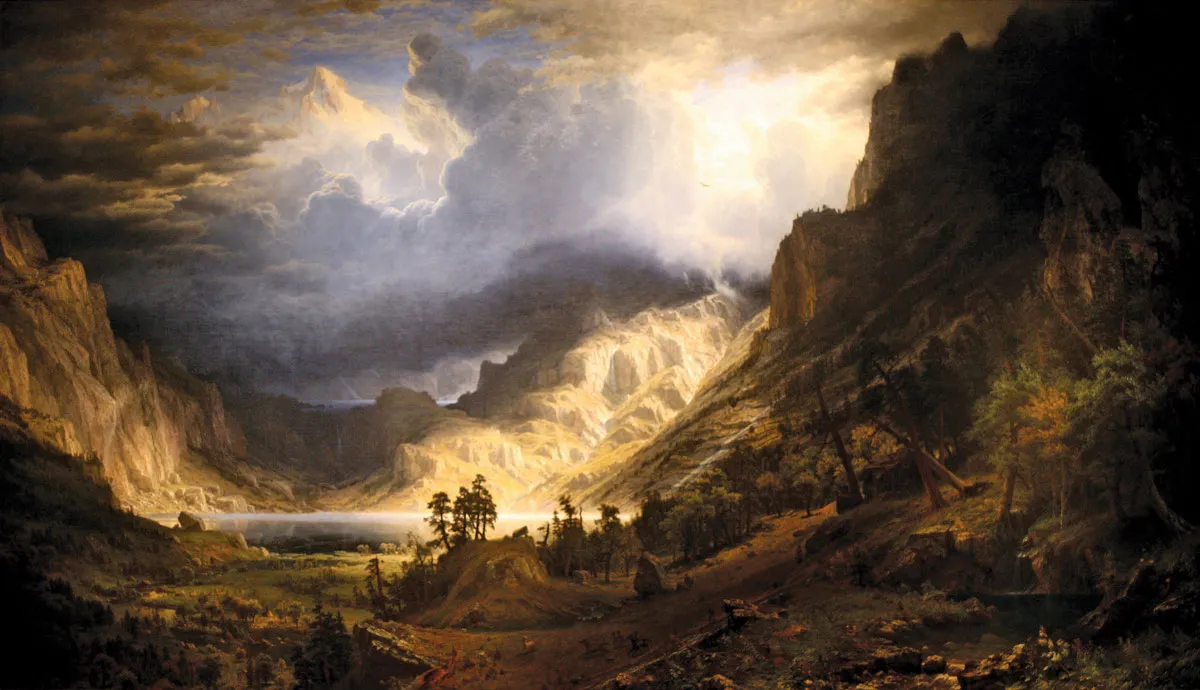
Source: Encyclopedia Britannica
Transcendentalism
Transcendentalism was a form of American philosophy that emerged in the early 19th century, emphasizing the importance of intuition and spiritual connection to the divine. This philosophy rejected traditional Puritan beliefs and the rationalism of the Unitarian Church, instead promoting individualism and self-sufficiency.
One of the key figures in the development of transcendentalism was Ralph Waldo Emerson. He wrote extensively on the philosophy and its principles, including the influential essay "Self-Reliance," which championed the idea that individuals should trust their own intuition and inner guidance rather than relying on external authority.
Emerson's friend, Henry David Thoreau, was also a prominent transcendentalist and wrote a book called Walden: Or Life in the Woods, which detailed his experiences living in a cabin in the woods and his beliefs in simplicity and self-sufficiency. Thoreau was also a proponent of civil disobedience, the idea that individuals have a moral duty to disobey unjust laws.
He famously served time in jail for refusing to pay taxes in protest of the Mexican-American War and slavery. Together, Emerson and Thoreau were instrumental in shaping the transcendentalist movement and the ideas it espoused. 🚓

Source: HowStuffWorks History
Communal Experiments
The idea of creating an ideal community or utopia by withdrawing from conventional society and starting anew in a different setting was not a new concept in the antebellum period. However, during this time, there were a significant number of experiments in communal living, with many different groups attempting to establish their own utopian communities.

Source: Wikimedia
One of the earliest religious communal movements was the Shakers. Founded by Mother Ann Lee in the late 18th century, the group had grown to include about 6,000 members in various communities by the 1840s. Mother Ann Lee believed that she was the feminine incarnation of Christ and advocated for a new theology based on sexual equality. 🤝
The group was named for their ritual dance and was known for its communal ownership, strict celibacy, and minimal contact with the outside world. They believed that Christ's Second Coming was imminent, which contributed to their isolation from society. The Shakers held property in common and kept men and women strictly separate, forbidding marriage and sexual relations. However, the movement eventually died out by the mid-1900s due to a lack of new recruits.
🎥 Watch: AP US History - Abolitionism and Other Reforms
Browse Study Guides By Unit
🌽Unit 1 – Interactions North America, 1491-1607
🦃Unit 2 – Colonial Society, 1607-1754
🔫Unit 3 – Conflict & American Independence, 1754-1800
🐎Unit 4 – American Expansion, 1800-1848
💣Unit 5 – Civil War & Reconstruction, 1848-1877
🚂Unit 6 – Industrialization & the Gilded Age, 1865-1898
🌎Unit 7 – Conflict in the Early 20th Century, 1890-1945
🥶Unit 8 – The Postwar Period & Cold War, 1945-1980
📲Unit 9 – Entering Into the 21st Century, 1980-Present
📚Study Tools
🤔Exam Skills
👉🏼Subject Guides
📚AMSCO Notes

Fiveable
Resources
© 2025 Fiveable Inc. All rights reserved.